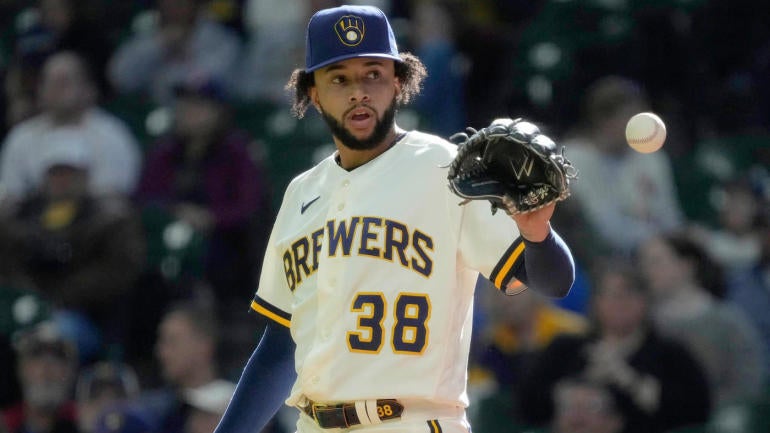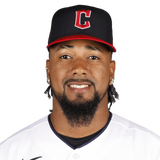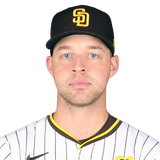
In some ways, ranking relief pitchers is the most straightforward task there is in Fantasy Baseball: Just rank all 32 prospective closers by job security, and your job is mostly done. The end-of-year rankings are going to mostly reflect which closers spent the longest time in that role for their respective teams, after all.
Of course, that's also what makes rankings relief pitchers for a standard Fantasy Baseball league kind of impossible. It's hard enough trying to figure out who is going to be good in any given year or not, especially when dealing with a subset of pitchers that will mostly throw fewer than 70 innings. But, when you're ranking closers, you also have to take into account some inherently unknowable factors, like how much job security a guy has, how likely his team is to stick with them through struggles, and how likely they are to get traded.
- Position Strategies: C | 1B | 2B | 3B | SS | OF | SP | RP
- Position Previews: C | 1B | 2B | 3B | SS | OF | SP | RP
- Position Tiers (v. 2.0): C | 1B | 2B | 3B | SS | OF | SP | RP
Now, luckily, the stakes are fairly low, especially in H2H formats, where even the best closers only tend to score like low-end No. 2 SPs. And, in Roto leagues, you have two choices: Either pay up for the elite guys or chase the lower-likelihood options, either in the late rounds or on waivers, to get the roughly 80-plus saves you need to compete in that category. Closers obviously matter more in Roto, and you'll pay more for them, but they're mostly one-category contributors -- they'll help in ratios and Ks, but outside of the truly elite, their contributions tend to be pretty limited -- so you don't necessarily need to invest too much in them.
If you are going to, however, these names in the top 12 should be at the top of your list. And for those of you in H2H points leagues? You might want to scroll down to the SPaRP section below.
We didn't see Diaz last season after he tore his ACL during the World Baseball Classic, so I suppose there's some degree of uncertainty about how he'll respond to that injury. But I really don't have any concerns there, and I'll take any discount you might have on offer. Diaz is still very much in his prime and he'll be more than a full year removed from injury by the time Opening Day rolls around. There is, I suppose, some risk here, but not enough to scare me off.
| ||||||||||||||||||||
Hader landed with a team that should pretty easily clear 90 wins yet again, and that should once again make him one of the best closers in Fantasy. He's no longer quite as dominant as he was at his peak, when he was routinely putting up strikeout rates north of 45%, but he bounced back in a big way in 2023 from his weirdly rough 2022, and if the Astros can fine-tune his approach the way they have with so many other pitchers, Hader should remain one of the best relievers in baseball throughout his tenure there.
| ||||||||||||||||||||
Here's the first of the elite tier of closers I think you can say has real red flags in his profile entering the season. Clase took a step back pretty much across the board in 2023, posting his worst strikeout rate ever and his worst expected wOBA on contact since his rookie season. Now, Clase still mostly did a good job generating weak contact, because, as it turns out, hitting a 99 mph cutter squarely is still really hard. But his slider was significantly less effective than it had been in prior seasons, both in terms of generating whiffs and generating weak contact. The overall profile was still very strong – a 3.06 expected ERA is certainly nothing to scoff at, and he has led the majors in saves in consecutive seasons – but it just isn't quite as dominant as it was two years ago.
| ||||||||||||||||||||
Doval was a popular bust pick this time a year ago, but he backed up his breakout in 2022 with another very strong season in 2023. He represents a clear step down from the top options at the position, both in terms of his skill set and the team he plays on, but Doval is still a very, very good pitcher, with a 2.90 and 2.91 xERA in consecutive seasons. Doval might benefit from following the Clase path and just spamming cutters and sliders, if you're looking for a path to another step forward, but as things stand, he looks like a safe bet for 30-plus saves, 90-ish strikeouts, and not-quite-elite ratios.
| ||||||||||||||||||||
This is actually a pretty good year for SPaRPs, and we'll have more on the other names you need to know shortly, but Ragans is the clear best option. SPaRP stands for "Starting Pitcher as Relief Pitcher," and refers to players who will serve as starters for their team but can be slid into a relief pitcher slot in your lineup, which is especially useful in H2H points leagues, where 17 starting pitchers outscored the No. 1 reliever last season. Ragans saw a velocity bump in Spring Training last season, and while he wasn't particularly impressive out of the bullpen with the Rangers, he looked like a star after joining the Royals rotation following a July trade. In 12 starts, he had a 2.64 ERA that was backed up by a 2.49 FIP, with 89 strikeouts in 71.2 innings. There were some issues with control – he walked 16 in 24 innings over his final four starts – and he'll need to show that the jump to the high-90s with his fastball can carry over in Spring Training as he prepares for a full season of starting. But if last year was for real, Ragans legitimately might have top-12 upside as a starter, which would make him the clear best RP in Fantasy.
| ||||||||||||||||||||
2023 was a bit of a step back for Iglesias, and as he enters his age-34 season, I'm not sure we should expect him to turn things around, though there are paths to it. After throwing his slider 26% of the time in 2022, Iglesias dropped his usage down to 15.4%, so throwing that a bit more could help recover some of the strikeouts he's lost over the past couple of years. If he doesn't, he's still likely to be a very good closer for Fantasy on arguably the best team in the league, though one who is rightly viewed as a tier down from the truly elite guys at the position.
| ||||||||||||||||||||
Romano mostly has a clean bill of health – he missed time last year with back inflammation, and dealt with an elbow issue back in 2021 – and has established himself as one of the more reliable closers in the game with back to back 36-save seasons. If there's any drawback to Romano's profile, it probably has more to do with the Blue Jays projecting to be more of a good team than a great one, but that shouldn't prove to be too much of an obstacle to 35-ish saves.
| ||||||||||||||||||||
The Diamondbacks finally stopped screwing around with their ninth inning situation, and Sewald should have little competition on a team that should continue their forward momentum. He's a hair less dominant than he was at his Seattle peak, but Sewald should still be a good source of ratios, with 80-90 strikeout upside. He's a perfectly viable No. 1 closer.
| ||||||||||||||||||||
With Matt Brash dealing with an elbow injury to open the season, the runway is completely clear for Munoz to open the season as a closer for the first time. He's earned it, with a 2.88 ERA and 1.082 WHIP in his major-league career, with a 34.6% strikeout rate that puts him squarely in the second tier of elite closers. Munoz plays for a good team, in a good ballpark, and is a good pitcher with no saves competition. He's an easy top-10 closer right now.
| ||||||||||||||||||||
When the Pirates were stuck in perpetual rebuild mode, you always had to add the "if he gets traded …" caveat to any discussion of Bednar's Fantasy value. However, with the Pirates seemingly having some forward momentum for the first time in years, there's a chance Bednar is pitching for a playoff contender in Pittsburgh this season. I don't think the addition of Aroldis Chapman is likely to create much competition in the ninth inning whatsoever, so as long as Bednar can get over the minor lat injury he suffered in the spring, he should remain one of the best closers in the game.
| ||||||||||||||||||||
"What if Edwin Diaz was 20% worse?" The comparison is unfair, but it's also inevitable, given that they are brothers. Alexis doesn't have quite the velocity or command his elder brother does, and the 1.2-mph drop in average fastball velocity last season is a bit of a red flag. None of the Reds alternatives really inspires much confidence, so Diaz should have a decent amount of job security, but there's definitely more volatility in his profile than you'd like for your No. 1 closer.
| ||||||||||||||||||||
There might not be a better per-inning reliever over the past couple of seasons than Fairbanks, who has a 2.08 ERA and 0.894 WHIP since the start of 2022. Unfortunately, he's thrown just 69.1 innings in that span. Attrition has pushed him into the top-12 of the RP position, which is a hefty price to pay for someone with as much volatility as Fairbanks has. But if he stays healthy, he could be a top-five closer for Fantasy.
| ||||||||||||||||||||
King put up a 1.88 ERA, 2.47 FIP, and 31.3% strikeout rate as a starter last season. Now he's just gotta do it for more than 38.1 innings. King has been a very, very good pitcher in the majors, though almost exclusively as a reliever, but he had failed pretty hard when asked to start before last year's season-ending, eight-start stretch of dominance. King hasn't shown he can sustain that level of success while throwing 90-plus pitches consistently, and personally, I'm quite skeptical that he'll be able to pull it off. But he wouldn't be the first pitcher to transition to the rotation mid-career and find success, so I don't want to write him off entirely – especially with a four-pitch arsenal that should play as a starter multiple times through the lineup. King is definitely a risk-reward proposition, and I don't love him as a top-150 pick, even if I can definitely see the appeal.
| ||||||||||||||||||||
Stuff has never been an issue for Pivetta, who has been a popular sleeper/breakout candidate multiple times in his career. We know there will be plenty of strikeouts and swinging strikes here, because that's always been the primary appeal here. The problem is, Pivetta has always gotten hit really hard, leading to a 4.86 career ERA compared to a 4.04 xFIP. Boston is a tough park to pitch in, and Pivetta seems likely to have an inflated ERA even if he continues to post elite strikeout rates. There's some upside here, certainly, but I've gone down the Pivetta road too many times to allow myself to truly buy in.
| ||||||||||||||||||||
Pepiot has always done a lot well as a pitching prospect. His minor-league track record has tons of strikeouts on the ledger, and the highest batting average he's allowed in a minor-league season is .222. The problem has always been command, but he showed signs of fixing that issue last season, as he walked just 3.9% of opposing hitters between Triple-A and the Majors last season. There weren't really any significant changes in his pitch mix to get there, so it's hard to say how much of it was legit – he did throw his slider a bit harder, pushing it closer to cutter territory without sacrificing any swing-and-miss, which could help the whole profile play up. We're dealing with small sample sizes or those improvements, just around 66 innings between both levels, but he thrived in what was effectively a starter's role down the stretch for the Dodgers, sporting a 1.85 ERA across 42 innings from mid-August on. The Rays have a tendency to get the most out of their starters, even more so than the Dodgers, and Pepiot could be the next beneficiary. I'm surprised he isn't even more expensive in Fantasy drafts.
| ||||||||||||||||||||
We saw Montas for exactly 26 pitches last season, and it wasn't exactly encouraging. Coming back from more than a year of shoulder injuries that culminated with surgery last offseason, Montas averaged just 93.9 mph with his fastball in that relief appearance at the end of the season for the Yankees, down from 95.6 in 2022 and 96.2 mph in 2021. Montas hasn't really pitched at a Fantasy-relevant level since July of 2022, but the Reds were at least willing to give him a $14-million contract this offseason to see if he can rediscover some of his pre-injury upside. It's a long-shot gamble for the Reds and for Fantasy, but if it works out, that RP eligibility could make him very valuable.
| ||||||||||||||||||||
Paddack is kind of on the opposite end of the spectrum from Montas, as his brief return at the end of 2023 came with a marked improvement in both fastball velocity and shape. It was only five innings, but Paddack is also coming back from Tommy John surgery, a much more routine issue than Montas' recurring shoulder woes. Of course, Paddack also hasn't really been a must-start Fantasy option since 2019, so there's a lot less to go on here. But as a late-round dart throw, he showed me enough late last season to justify drafting.
| ||||||||||||||||||||
I put Puk in this sleeper spot back in February, and I've only grown more confident in the pick since. Injuries have pretty much locked a rotation spot in for Puk, though he was forcing his way in with 15 strikeouts across 8.1 scoreless innings of work this spring. Puk fared pretty well as a high-leverage reliever for the most part last season, sporting a 32.2% strikeout rate, 5.4% walk rate, and pretty solid quality-of-contact metrics. Doing that largely as a one-inning reliever is very different from doing it as a starter, but Puk spent the offseason adding a splitter and cutter to his repertoire to help make the transition to the rotation happen. Puk's fastball/slider combo makes for an awfully strong base to start from, and the Marlins have arguably had more success than any organization in baseball with developing their pitchers' changeups. He should be drafted late in all leagues, but especially H2H points leagues.
| ||||||||||||||||||||
It's always nice when you get to call a guy who already broke out a "breakout". Ragans' track record is exactly 12 starts long, but nothing at all about it looked flukey. He pitched consistently deep into games once he was stretched out, and his 31% strikeout rate was backed up by a five-pitch arsenal with four legitimate swing-and-miss pitches. There's some risk here given the lack of track record, as well as the command profile, but Ragans looked like a potential top-12 starting pitcher once he joined the Royals, and he won't cost anything like that in drafts.
| ||||||||||||||||||||
Diaz's career 2.47 ERA might make it seem like he's an elite closer, but the reality is a lot more complicated than that. There's a lot to like in his profile, starting with an elite slider he smartly throws more than half the time. But despite being able to dial his fastball up into the high-90s, it isn't a particularly great pitch, mostly because he gives up a lot of fly balls with it. His 38% groundball rate overall is scare enough without considering that he pitches half his games in the best park in baseball for home runs and gives out a ton of free passes. Diaz has mostly managed to avoid homer issues so far in his career, but I'm not sure how sustainable a 6.8% HR/FB rate is in Cincy, even for a pitcher who gets a lot of strikeouts and infield fly balls. In all likelihood, Diaz continues marching along, with a mid-3.00s-ish ERA for an improving team. But that improvement also means the stakes are higher, with the Reds eyeing a run to the playoffs, and a bad couple of weeks of homer luck could be all it takes to cost him his job.
| ||||||||||||||||||||
![[object Object] Logo](https://sportshub.cbsistatic.com/i/2020/04/22/e9ceb731-8b3f-4c60-98fe-090ab66a2997/screen-shot-2020-04-22-at-11-04-56-am.png)
















































